Andrew Mann
-
A Rare Glimpse of a Newborn Planet (TIDYE-1b)
The Featherweight Giant
Hazy with a chance of starspots (or rings?)
NASA’s TESS Discovers New Worlds in a River of Young Stars
Young Giant Planet Offers Clues to Formation of Exotic Worlds
TESS Finds Still-Forming Gas Giant in Binary Star System
Baby Alien Worlds Show Us How to Cook a Planet
Exoplanet in the Hyades Star Cluster
A Rare Glimpse of a Newborn Planet (IRAS 04125+2902b or TIDYE-1b):

Our Nature paper on the 3Myr planet IRAS 04125+2902b was covered by a range of international and US outlets. This included Reuters, a NASA discovery alert, USA Today, the Associated Press, and an interview on ABC. UNC also did their own story
For more information, check out the Nature briefing here or the Nature article. I also have a summary in my research page.
To the right is an artist rendition of the IRAS 04125+2902b system showing the planet and the outer misaligned disk. In the background, you can see the lower-mass companion as well as the nebulosity from the Taurus-Auriga star-forming region.
Image credit: NASA/JPL-Caltech/R. Hurt, K. Miller (Caltech/IPAC).
NASA’s TESS Discovers New Worlds in a River of Young Stars (TOI-451bcd)
Our discovery of the TOI-451 planet was covered by NASA.

This illustration sketches out the main features of TOI 451, a triple-planet system located 400 light-years away in the constellation Eridanus. Credit: NASA’s Goddard Space Flight Center
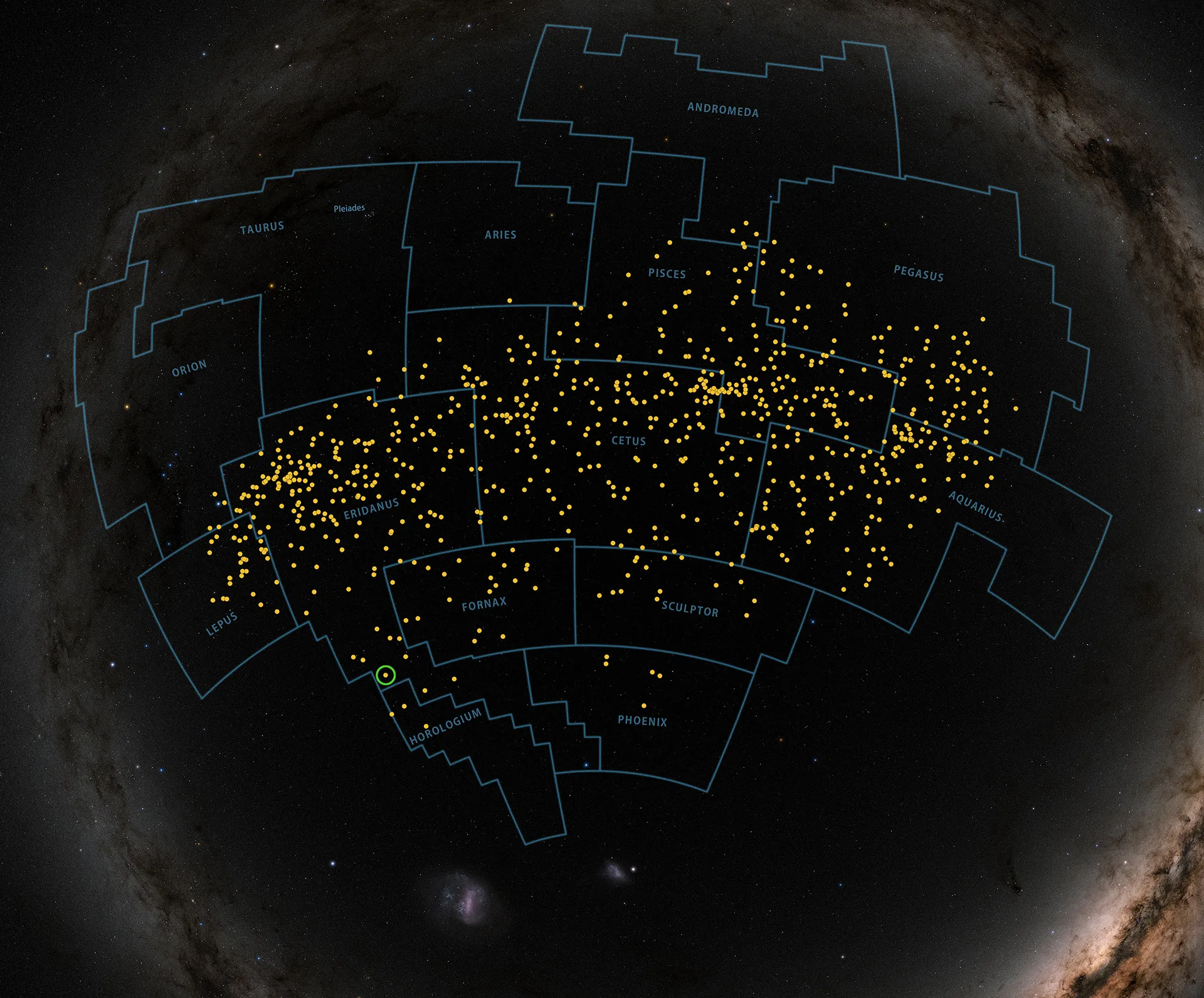
The Pisces-Eridanus stream spans 1,300 light-years, sprawling across 14 constellations and one-third of the sky. Yellow dots show the locations of known or suspected members, with TOI 451 circled. TESS observations show that the stream is about 120 million years old, comparable to the famous Pleiades cluster in Taurus (upper left). Credit: NASA’s Goddard Space Flight Center
HIP 67522b:
Our discovery of the 15 Myr planet in Sco-Cen (HIP 67522) was covered by Universe Today, Science News, and highlighted on JPL and McDonald Observatory
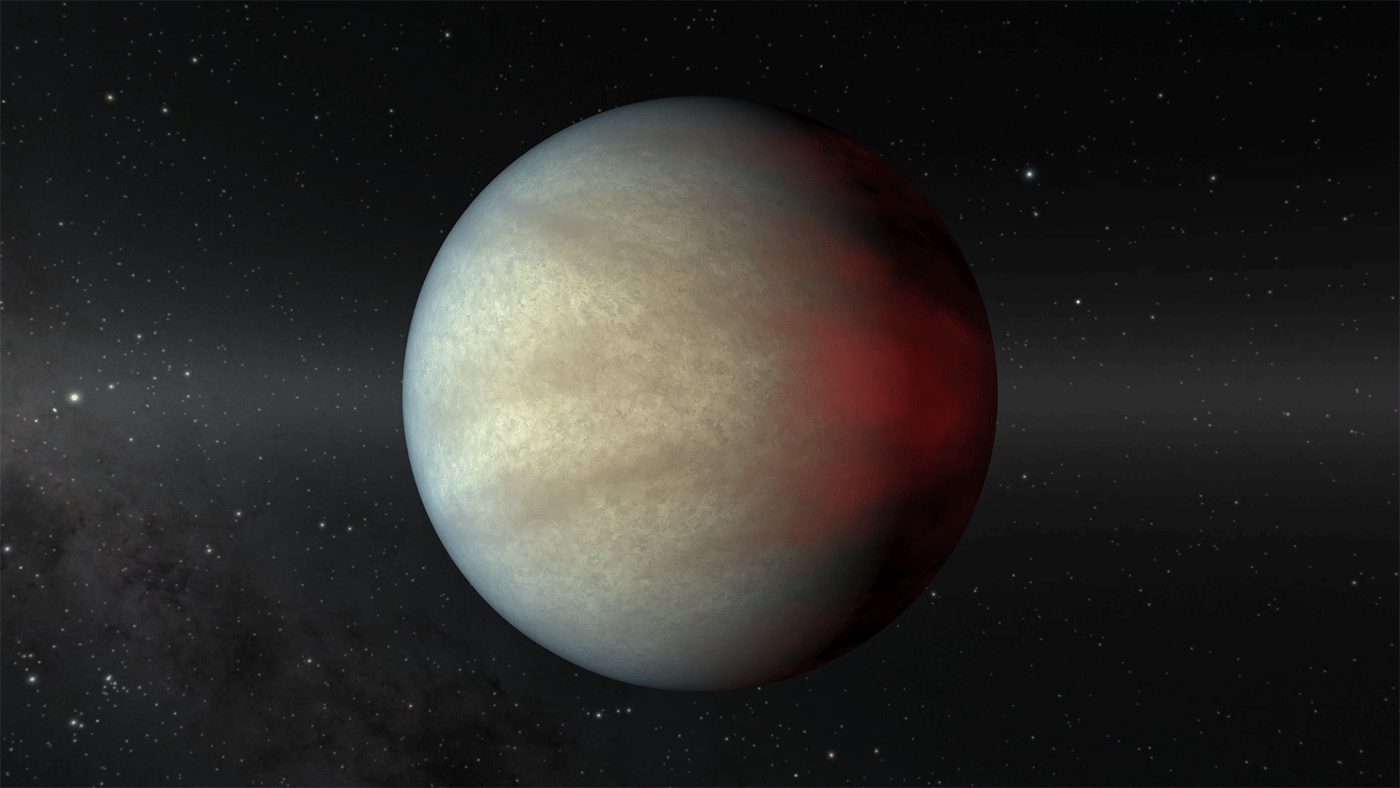
Animation shows the type of gas giant planet known as a Hot Jupiter that orbits very close to its star. More young hot Jupiters like HIP 67522b can help us understand how giant planets migrate from wider orbits to their final configuration. Credit: NASA/JPL-Caltech
TESS Finds Still-Forming Gas Giant in Binary Star System
Our discovery of the 45 Myr planet DS Tuc Ab was picked up in numerous articles, including Science News, SciTechDaily, and space.com.
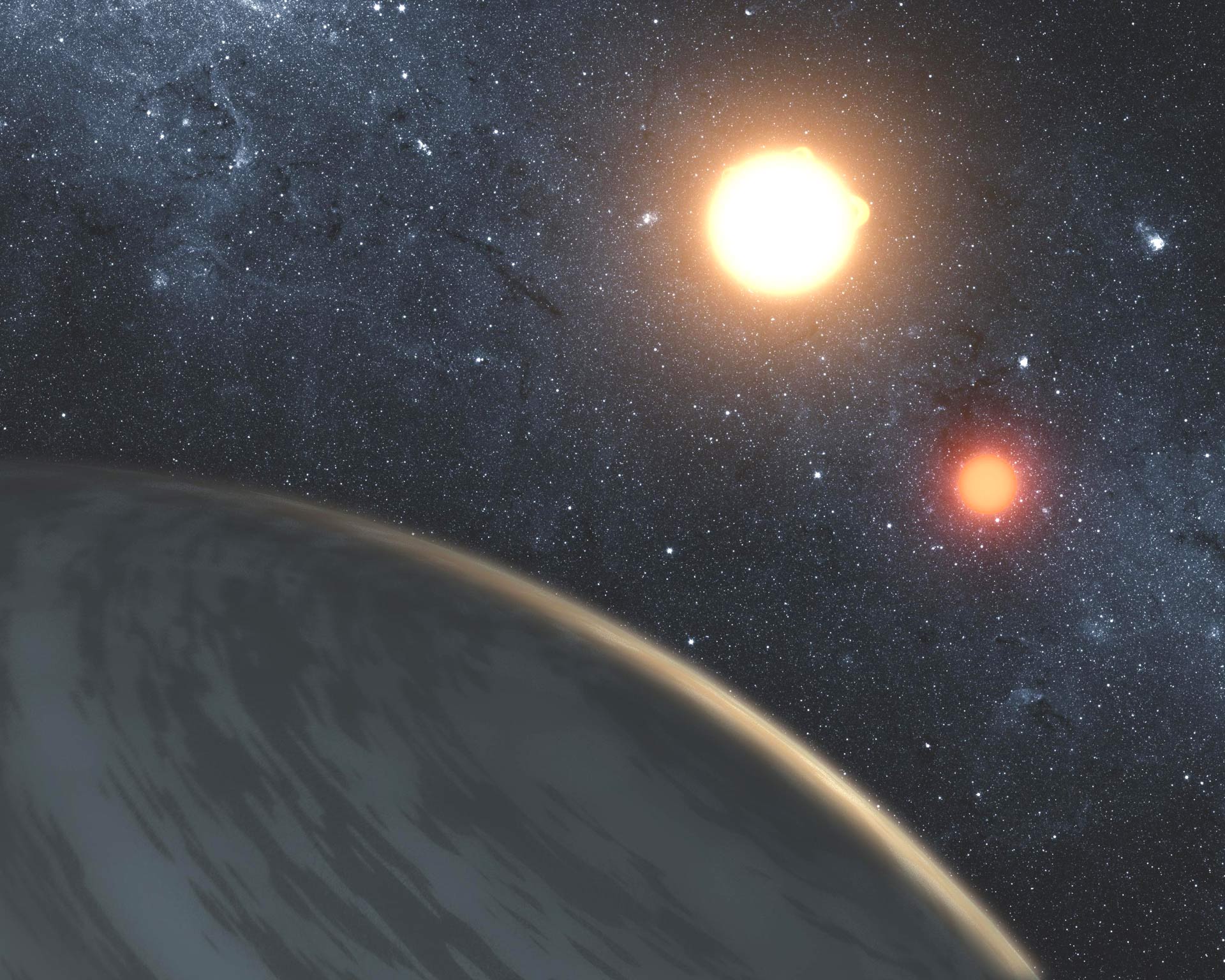
An artists rendition of the view from the surface of DS Tuc Ab, showing the binary star system (DS Tuc AB). Credit: NASA/JPL-Caltech/T. Pyle.
Baby Alien Worlds Show Us How to Cook a Planet (K2-33b)
This article from the bad astronomy blog does a good job explaining why K2-33b is important. You can also check out the UT, NOAO, and CfA press releases.
When a planet such as K2-33b passes in front of its host star, it blocks some of the star's light. Observing this periodic dimming, called a transit, from continual monitoring of a star's brightness, allows astronomers to detect planets outside our solar system with a high degree of certainty. This Neptune-sized planet orbits a star that is approximately 11 million years old. In addition to the planet, the star hosts a disk of planetary debris, seen as a bright ring encircling the star. Animation credit: NASA/JPL-Caltech
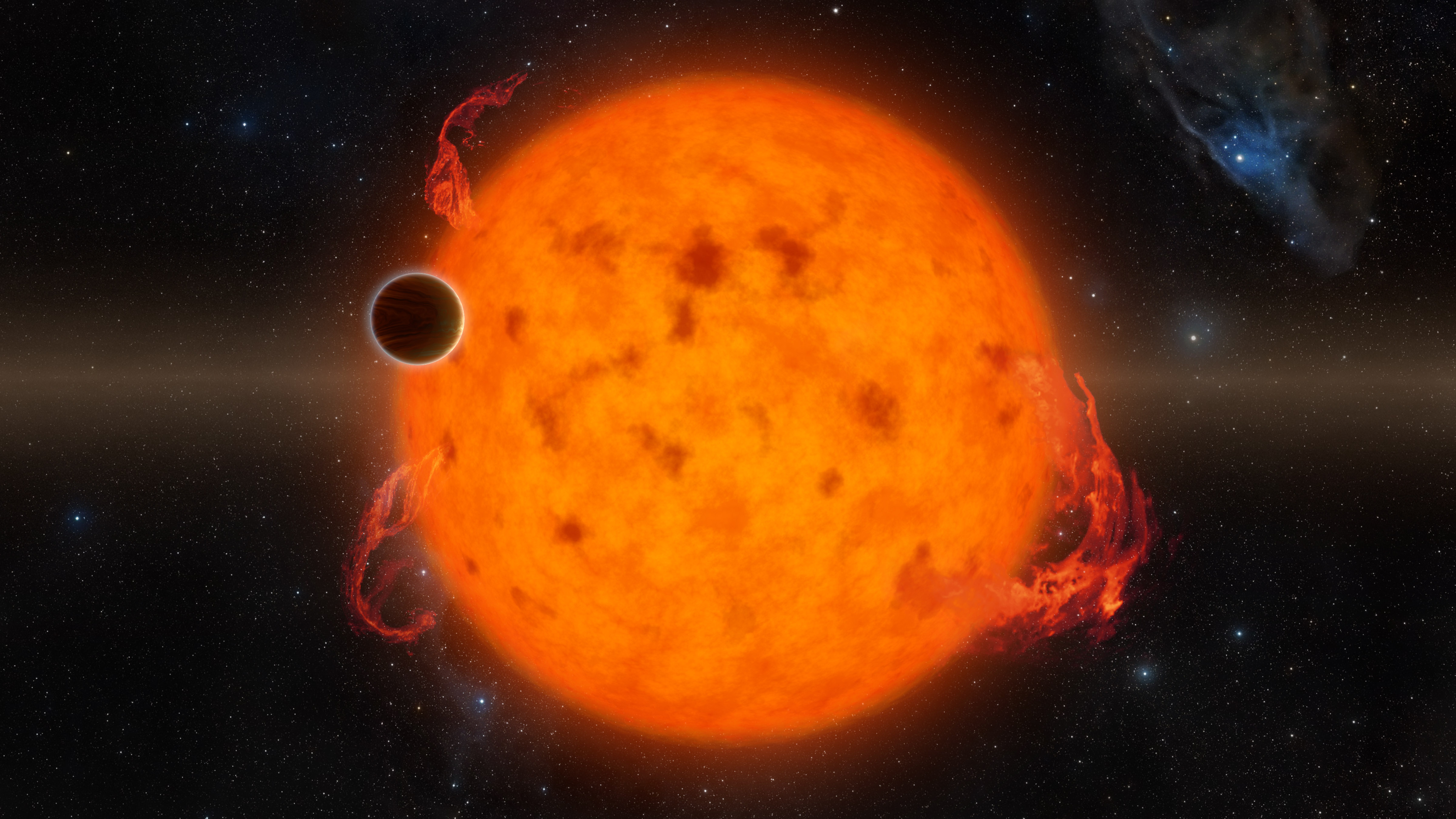
Artist rendition of the K2-33 system. Image credit: NASA/JPL-Caltech

This image shows the K2-33 system, and its planet K2-33b, compared to our own solar system. The planet has a five-day orbit, whereas Mercury orbits our sun in 88 days. The planet is also nearly 10 times closer to its star than Mercury is to the sun. Image credit: NASA/JPL-Caltech
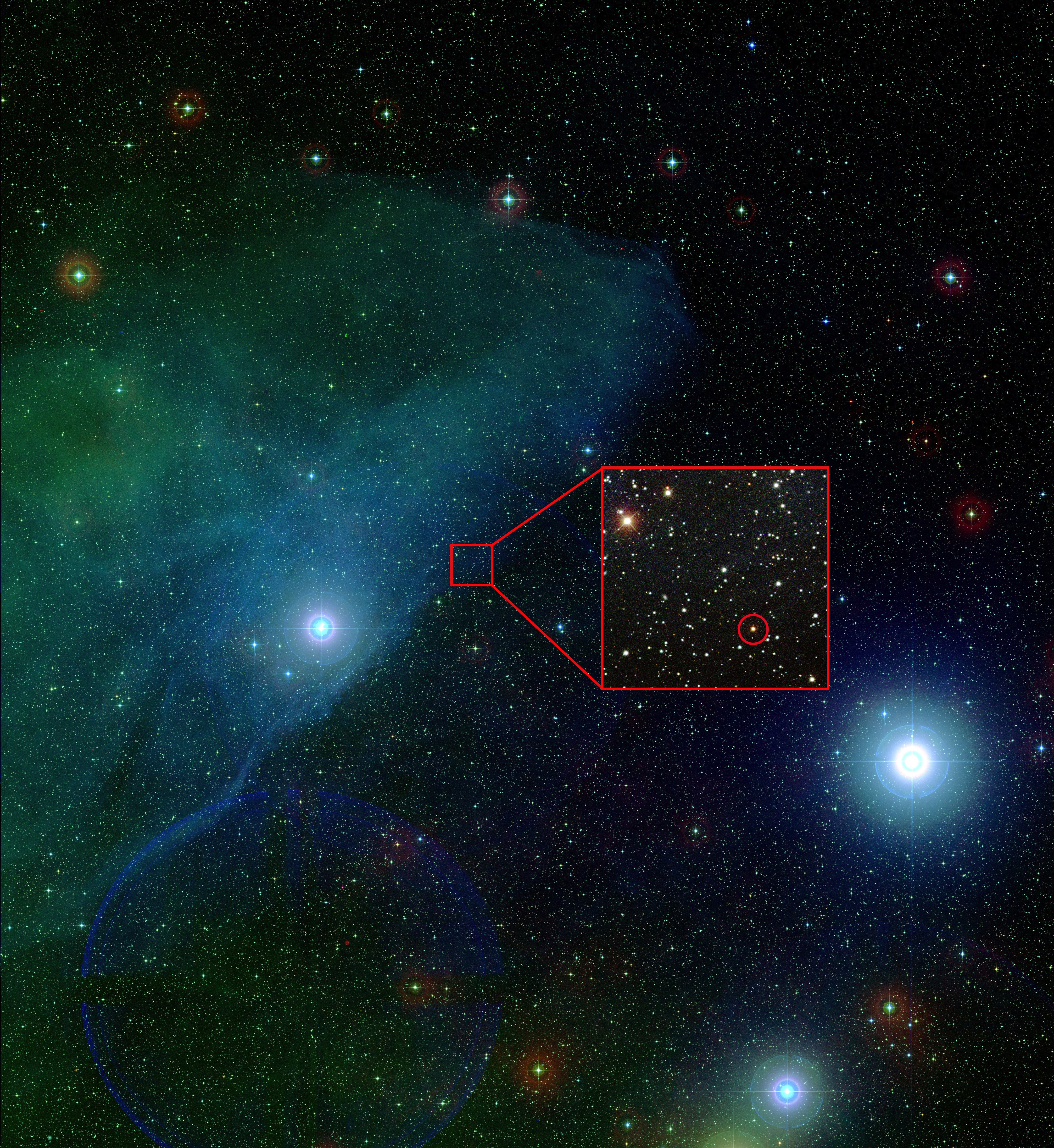
Digitized Sky Survey (DSS) image of the 11 million year old Upper Scorpius Star forming region. The two bright stars are Nu Scorpii (left) and Beta Scorpii (right), both likely members of Upper Scorpius. The cloudy region around Nu Scorpii is a reflection nebula; residual dust from recent star formation as well as interstellar dust is reflecting light from the bright star. A zoom-in inset is shown around the star K2-33b, with the planet host circled in red. Image credit: A. Mann, DSS/SDSS
Exoplanet in the Hyades Star Cluster (K2-25b)
UT press release has some basic information about the system. The discovery was also featured in Sky and Telescope (among other places).

The red dwarf star K2-25 is indicated in this view of part of the Hyades open star cluster from the Digitized Sky Survey. The Hyades is the closest open star cluster to Earth. It is visible in the night sky in the horns of the constellation Taurus, the bull. (A. Mann/McDonald Obs./DSS)

Our Nature paper on the 3Myr planet IRAS 04125+2902b was covered by a range of international and US outlets. This included Reuters, a NASA discovery alert, USA Today, the Associated Press, and an interview on ABC. UNC also did their own story
For more information, check out the Nature briefing here or the Nature article. I also have a summary in my research page.
To the right is an artist rendition of the IRAS 04125+2902b system showing the planet and the outer misaligned disk. In the background, you can see the lower-mass companion as well as the nebulosity from the Taurus-Auriga star-forming region.
Image credit: NASA/JPL-Caltech/R. Hurt, K. Miller (Caltech/IPAC).
The Featherweight Giant:
Our paper on the mass of a baby planet was covered in Nature research highlights. The main piece of this story was how we figured out the mass and composition of the atmosphere from the JWST spectrum. You can read more about this work the research highlights page. 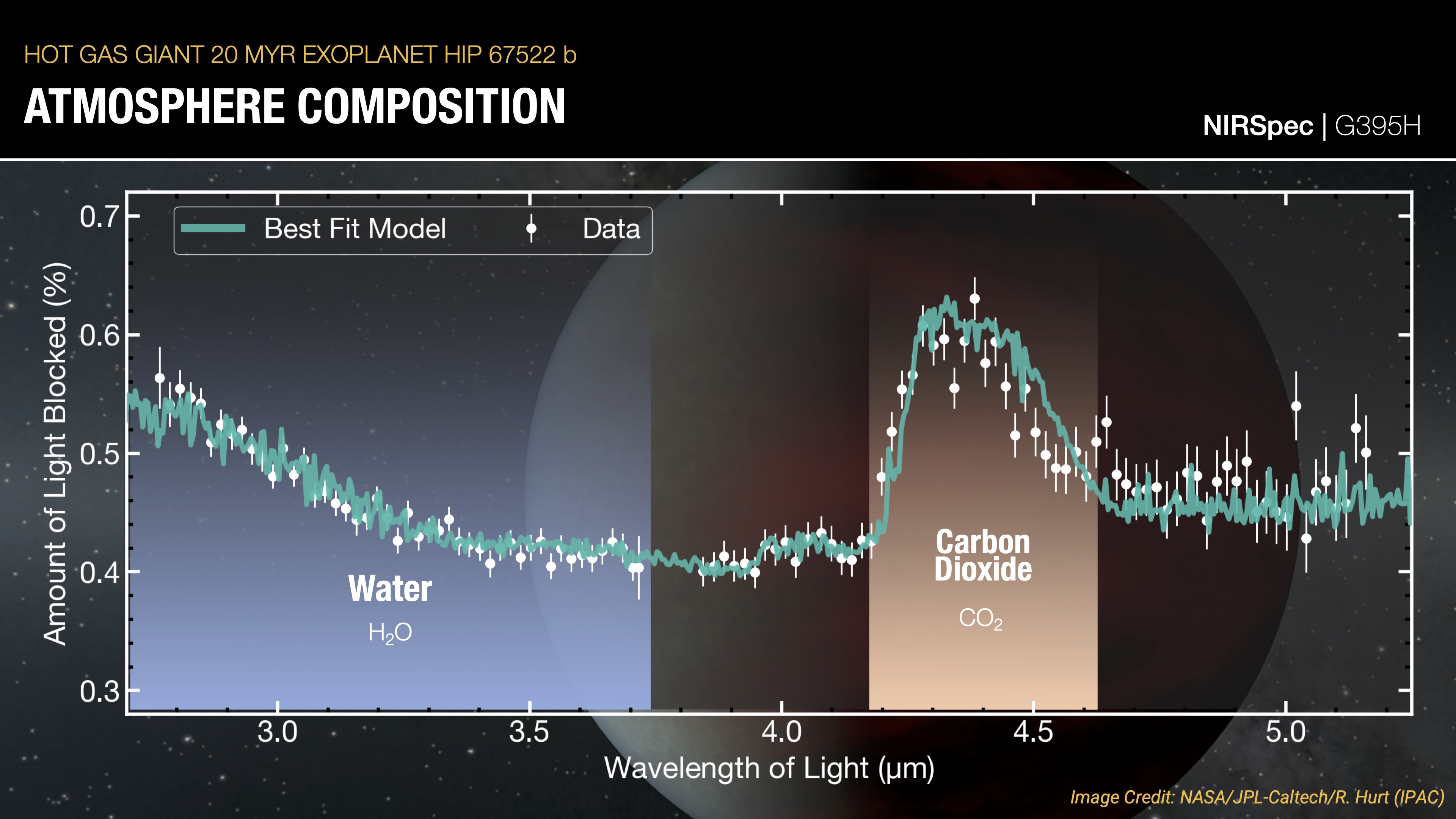
Our paper on the mass of a baby planet was covered in Nature research highlights. The main piece of this story was how we figured out the mass and composition of the atmosphere from the JWST spectrum. You can read more about this work the research highlights page.

Hazy with a chance of starspots (or rings?)
A pair of articles on astrobites covering our results on the 10 Myr planet K2-33b. We found that the transit depths varied by almost a factor of two from the optical to the infrared. The first A Smoggy Day on a Young Exoplanet, covered the main paper, focusing on the role of atmospheric hazes and/or spots on the stellar surface. The second article Could Rings Explain an Intriguing Exoplanet Spectrum? discussed an alternate explanation involving rings around the planet.
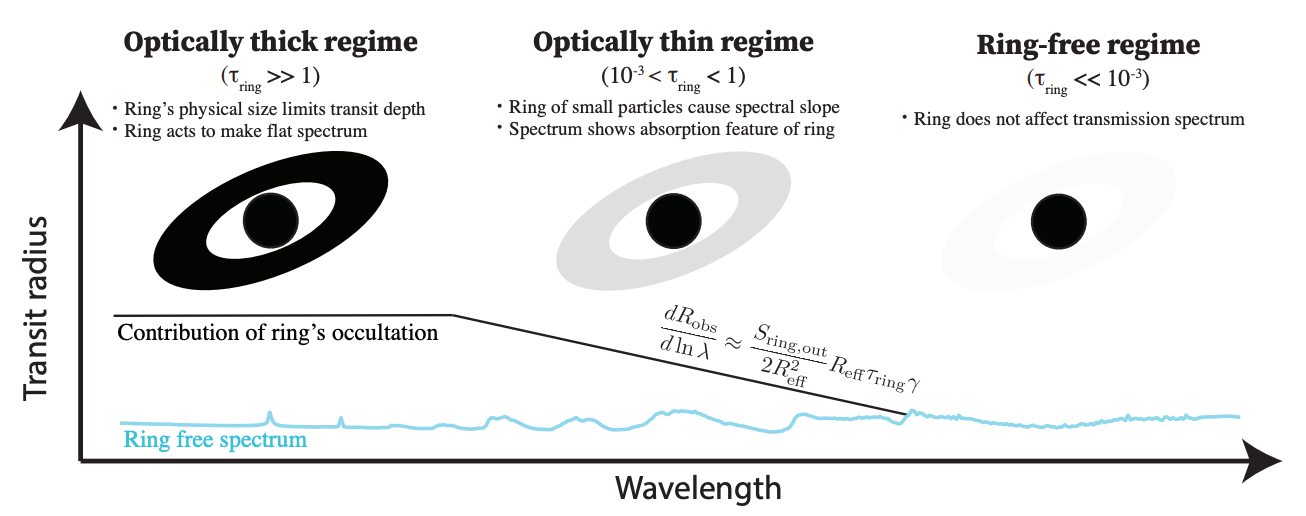
This cartoon shows how rings could make the planet seem much larger at optical wavelengths, where the ring is optically thick, but smaller at
redder wavelengths where the disk is more transparent.
A pair of articles on astrobites covering our results on the 10 Myr planet K2-33b. We found that the transit depths varied by almost a factor of two from the optical to the infrared. The first A Smoggy Day on a Young Exoplanet, covered the main paper, focusing on the role of atmospheric hazes and/or spots on the stellar surface. The second article Could Rings Explain an Intriguing Exoplanet Spectrum? discussed an alternate explanation involving rings around the planet.

NASA’s TESS Discovers New Worlds in a River of Young Stars (TOI-451bcd)
Our discovery of the TOI-451 planet was covered by NASA.

This illustration sketches out the main features of TOI 451, a triple-planet system located 400 light-years away in the constellation Eridanus. Credit: NASA’s Goddard Space Flight Center

The Pisces-Eridanus stream spans 1,300 light-years, sprawling across 14 constellations and one-third of the sky. Yellow dots show the locations of known or suspected members, with TOI 451 circled. TESS observations show that the stream is about 120 million years old, comparable to the famous Pleiades cluster in Taurus (upper left). Credit: NASA’s Goddard Space Flight Center
HIP 67522b:
Our discovery of the 15 Myr planet in Sco-Cen (HIP 67522) was covered by Universe Today, Science News, and highlighted on JPL and McDonald Observatory

Animation shows the type of gas giant planet known as a Hot Jupiter that orbits very close to its star. More young hot Jupiters like HIP 67522b can help us understand how giant planets migrate from wider orbits to their final configuration. Credit: NASA/JPL-Caltech
TESS Finds Still-Forming Gas Giant in Binary Star System
Our discovery of the 45 Myr planet DS Tuc Ab was picked up in numerous articles, including Science News, SciTechDaily, and space.com.

An artists rendition of the view from the surface of DS Tuc Ab, showing the binary star system (DS Tuc AB). Credit: NASA/JPL-Caltech/T. Pyle.
Baby Alien Worlds Show Us How to Cook a Planet (K2-33b)
This article from the bad astronomy blog does a good job explaining why K2-33b is important. You can also check out the UT, NOAO, and CfA press releases.
When a planet such as K2-33b passes in front of its host star, it blocks some of the star's light. Observing this periodic dimming, called a transit, from continual monitoring of a star's brightness, allows astronomers to detect planets outside our solar system with a high degree of certainty. This Neptune-sized planet orbits a star that is approximately 11 million years old. In addition to the planet, the star hosts a disk of planetary debris, seen as a bright ring encircling the star. Animation credit: NASA/JPL-Caltech

Artist rendition of the K2-33 system. Image credit: NASA/JPL-Caltech

This image shows the K2-33 system, and its planet K2-33b, compared to our own solar system. The planet has a five-day orbit, whereas Mercury orbits our sun in 88 days. The planet is also nearly 10 times closer to its star than Mercury is to the sun. Image credit: NASA/JPL-Caltech

Digitized Sky Survey (DSS) image of the 11 million year old Upper Scorpius Star forming region. The two bright stars are Nu Scorpii (left) and Beta Scorpii (right), both likely members of Upper Scorpius. The cloudy region around Nu Scorpii is a reflection nebula; residual dust from recent star formation as well as interstellar dust is reflecting light from the bright star. A zoom-in inset is shown around the star K2-33b, with the planet host circled in red. Image credit: A. Mann, DSS/SDSS
Exoplanet in the Hyades Star Cluster (K2-25b)
UT press release has some basic information about the system. The discovery was also featured in Sky and Telescope (among other places).

The red dwarf star K2-25 is indicated in this view of part of the Hyades open star cluster from the Digitized Sky Survey. The Hyades is the closest open star cluster to Earth. It is visible in the night sky in the horns of the constellation Taurus, the bull. (A. Mann/McDonald Obs./DSS)